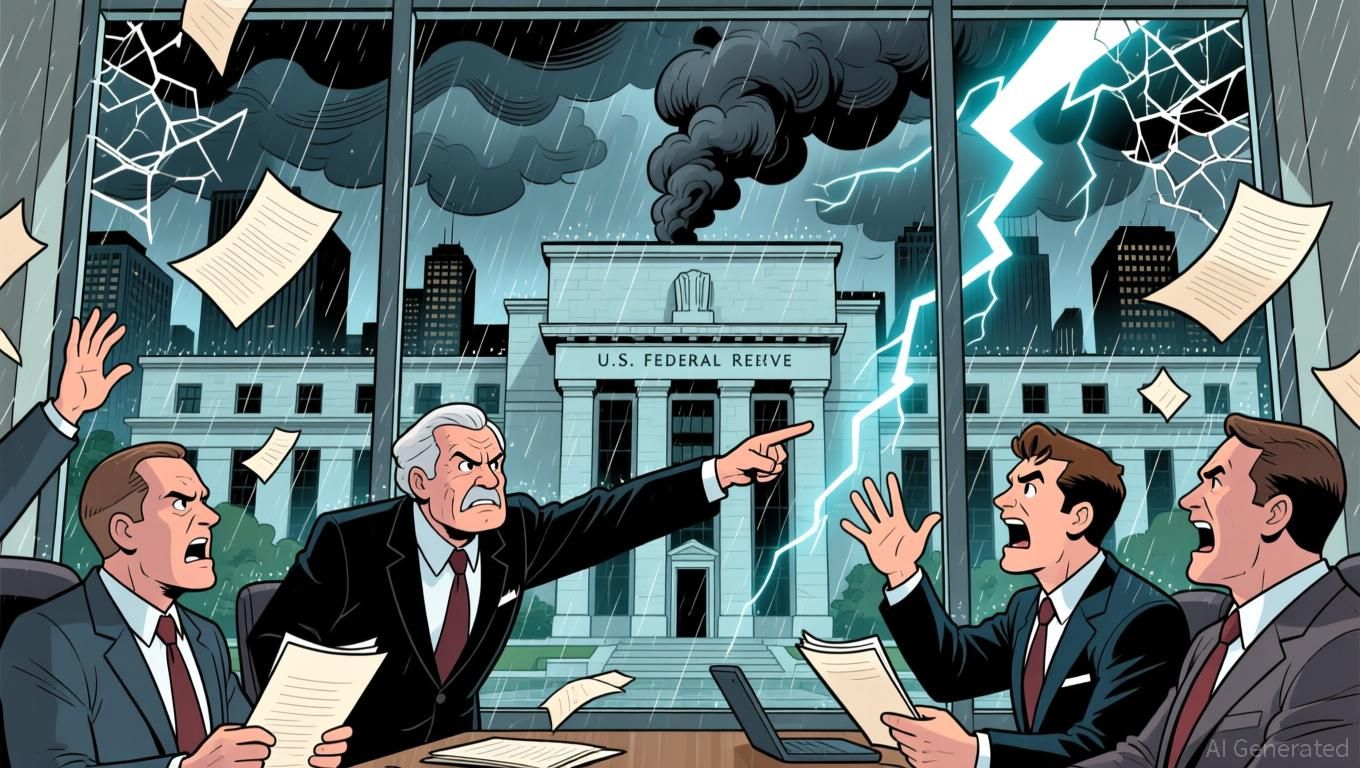Fed's Battle Between Inflation and Jobs Drops Chances of December Rate Cut to 33%
- Fed's December rate cut odds dropped to 33% due to internal divisions and delayed labor market data. - October/November jobs reports delayed until post-Dec 9-10 meeting, removing key policy input. - 10-2 October voting split and cautious officials like Collins highlight policy uncertainty. - Bitcoin fell 20% while gold dipped below $4,000 as markets react to reduced cut expectations. - Analysts warn prolonged indecision risks volatility, with December outcome hinging on incoming data.
The likelihood of the Federal Reserve lowering rates in December has sharply declined to 33%,
The U.S. Bureau of Labor Statistics’ move to delay the October and November employment reports until after the Fed’s December gathering has deprived policymakers of crucial information. The October jobs data was canceled due to a government shutdown, and the November figures won’t be released until December 16, after the FOMC’s meeting on December 9-10. Without these updates, officials lack timely insights into the labor market, a vital component of their mandate to manage both inflation and employment.
Debate within the Fed has added to the uncertainty.

Market movements have reflected the Fed’s indecision.
Gold, often considered a safe haven during market stress, has also come under pressure.
Experts caution that the Fed’s ongoing indecision could extend market turbulence. “The Fed’s challenge in juggling inflation and employment is creating a climate of uncertainty,” one strategist observed, noting that the central bank’s dual objectives are increasingly in conflict.
Looking forward, the outcome of the December meeting will depend on new data and further signals from the Fed. Should officials decide to keep rates unchanged, the “higher-for-longer” scenario may persist, raising borrowing costs for both households and companies. On the other hand, a 25-basis-point cut would mark a cautious shift toward a more supportive policy, potentially lifting stocks and easing strain on the housing market.
As the Fed faces these pivotal decisions, markets are adopting a wait-and-see approach, closely watching the December meeting and the return of key economic indicators.
Disclaimer: The content of this article solely reflects the author's opinion and does not represent the platform in any capacity. This article is not intended to serve as a reference for making investment decisions.
You may also like
Fed Faces Dilemma Balancing Inflation Management and Job Market Stability Ahead of December Decision
- The Fed faces divided views on December rate cuts amid 39.6% odds of a 25-basis-point reduction versus 60.4% no-change probability. - Officials weigh inflation (3% vs 2% target) against resilient labor market (119,000 September jobs), complicating dual mandate balancing. - Bitcoin volatility ($81,629) and equity market jitters reflect uncertainty, with leveraged crypto positions facing margin pressures. - Corporate debt issuance for AI infrastructure and delayed economic reports heighten borrowing cost r

Bitcoin News Update: Major Investors Balance the Opportunities and Risks of Cryptocurrency
- BlackRock and institutional investors cautiously navigate Bitcoin/stablecoin adoption, balancing innovation with regulatory and volatility risks. - Stablecoins processed $9 trillion in 2025 payments, driven by cross-border efficiency and U.S. Treasury's GENIUS Act regulatory framework. - BlackRock manages Circle's $200B stablecoin reserves while enabling U.S. banks to hold crypto under OCC guidelines for controlled experimentation. - Hybrid financial systems emerge as Deutsche Börse and JPMorgan integrat

Kite’s Initial Public Offering Debut and Subsequent Price Fluctuations: Evaluating Immediate Risks and Future Growth Opportunities for Long-Term Investors
- Zerodha Kite's unconfirmed 2025 IPO status raises investor uncertainty amid mixed FY25 financial results showing 22.9% profit decline but strong liquidity reserves. - Brokerage revenue dropped 40% Q2 2025 due to industry-wide slowdown, highlighting Zerodha's vulnerability to macroeconomic shifts and regulatory pressures. - Crypto market volatility (e.g., MSTR's 60% share drop) underscores indirect risks for Zerodha if expanding into crypto trading or facing regulatory scrutiny in this space. - Long-term
Why the Crypto Crash on Oct 10 Was No Accident...